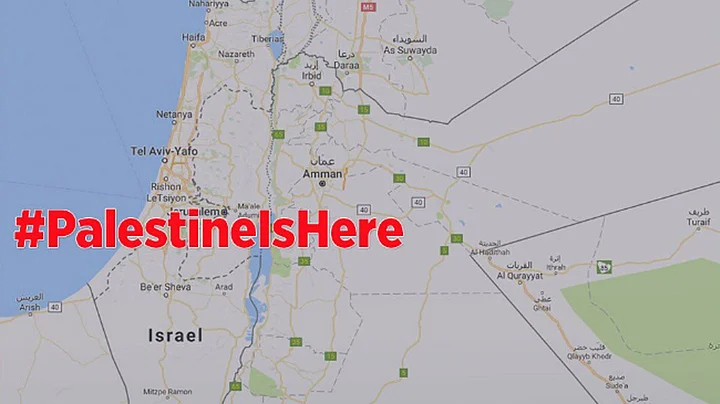#PalestineIsHere was a manifestation of collective outrage across the world after people realised that Palestine had ‘disappeared’ from Google Maps.
Except, Palestine as a label has never existed on Google Maps.
If you search Palestine on Google Maps, you will be directed to a dotted outline, without any label, a region stretching from Hebron in the south to Jenin in the north, and from Jerusalem to the Jordanian border.
Validating the lack of a label for the disputed territory, The Washington Post reported a Google Spokesperson saying:
There has never been a ‘Palestine’ label on Google Maps; however, we discovered a bug that removed the labels for ‘West Bank’ and ‘Gaza Strip’. We’re working quickly to bring these labels back to the area.
This is obviously politically problematic, a concern shared by many, on and off social media. A forum of Palestinian journalists have released a statement condemning Google.
The Forum of Palestinian Journalists condemns the crime carried out by Google in deleting the name of Palestine, and calls for Google to rescind its decision and apologise to the Palestinian people.The move is designed to falsify history, geography as well as the Palestinian people’s right to their homeland, and (is) a failed attempt to tamper with the memory of Palestinians and Arabs as well as the world.
In March, a petition by Zak Martin urged Google to include Palestine on their maps, an initiative that has gained traction in the last few days, now with almost 250,000 signatures.
136 members of the United Nations recognise Palestine as an independent state; the US and much of the West does not, which in itself leads to a larger issue – that of the power of mapping technologies like Google’s in the context of national identities.
Google Maps has become the default answer if one wants to search any place. However, what goes unnoticed is that these maps also shape our understanding of the physical, tangible world and territories around. Hence, if a map changes, distorts or, worse, does not include a territory, there’s an obvious problem.
Google Maps has courted controversy earlier as well. A 2014 project called Disputed Territories documented how Google Maps attempts to “stay out of geographical disputes and issues of national identity.” Also, users in Russia see a solid boundary line around Russia and Crimea. Crimea is surrounded by dotted lines outside of Russia, something that is indicative of it being an occupied territory.
Many have lashed out at the company for taking a side in cases of conflict territories.
The backlash over Palestine, therefore, makes sense.
Source: The Guardian and The Washington Post
(At The Quint, we question everything. Play an active role in shaping our journalism by becoming a member today.)
